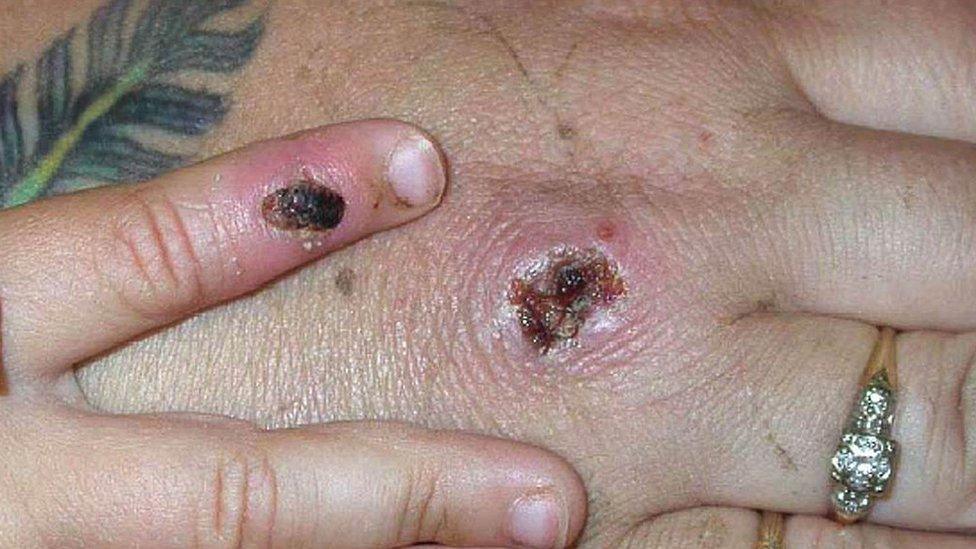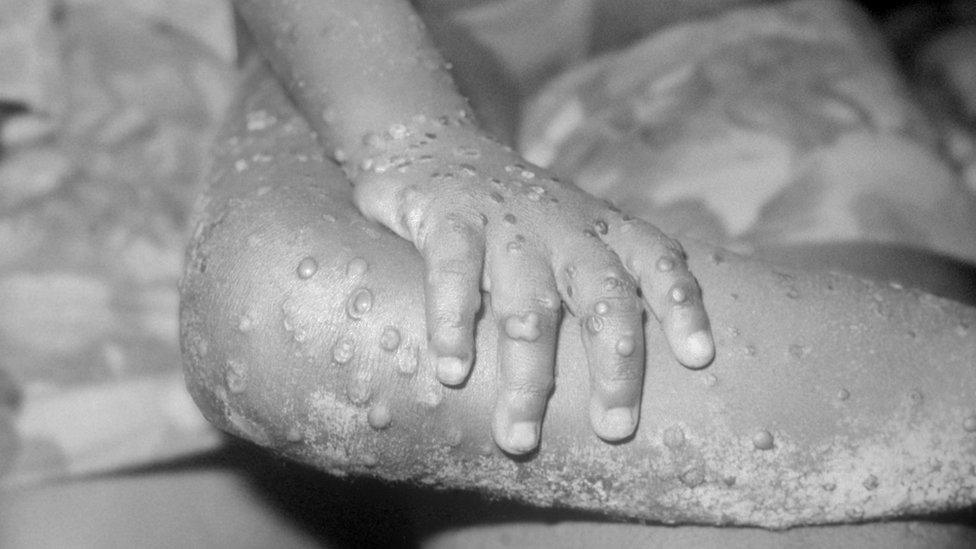Monkeypox: Two cases identified in north Wales
- Published

Monkeypox causes a rash, which can be extremely itchy, which changes and goes through different stages before finally forming a scab
There have been two cases of monkeypox identified in north Wales, health officials have said.
Public Health Wales (PHW) said the initial case was acquired overseas and both cases were identified in two people from the same household.
Monitoring and contact tracing is taking place and the risk to the general public is very low, PHW added.
Both people were admitted to a hospital in England, where one still remains.
Public Health England is also monitoring the situation.
"Confirmed cases of monkeypox are a rare event in the UK, and the risk to the general public is very low," said Richard Firth, PHW's consultant in health protection.
"We have worked with multi-agency colleagues, following tried and tested protocols and procedures, and identified all close contacts. Actions have been put in place to minimise the likelihood of further infection."
What is monkeypox?

Symptoms of monkeypox include a rash, fever, headache, muscle aches, backache, swollen lymph nodes, chills and exhaustion
The monkeypox virus is a member of the same family of viruses as smallpox, although it is much less severe and experts say chances of infection are low.
It occurs mostly in remote parts of central and west African countries, near tropical rainforests.
There are two main strains of virus - west African and central African.
What are the symptoms?
Initial symptoms include fever, headaches, swellings, back pain, aching muscles and a general listlessness.
Once the fever breaks, a rash can develop, often beginning on the face then spreading to other parts of the body, most commonly the palms of the hands and soles of the feet.
The rash, which can be extremely itchy, changes and goes through different stages before finally forming a scab, which later falls off. The lesions can cause scarring.
The infection usually clears up on its own and lasts between 14 and 21 days.
How dangerous is it?
Most cases of the virus are mild, sometimes resembling chickenpox, and clear up on their own within a few weeks.
Monkeypox can sometimes be more severe, however, and has been reported to have caused deaths in west Africa.
Sources: PHE England, external and World Health Organization, external
Related topics
- Published4 December 2019

- Published5 August 2022

- Published26 September 2018

- Published8 September 2018
